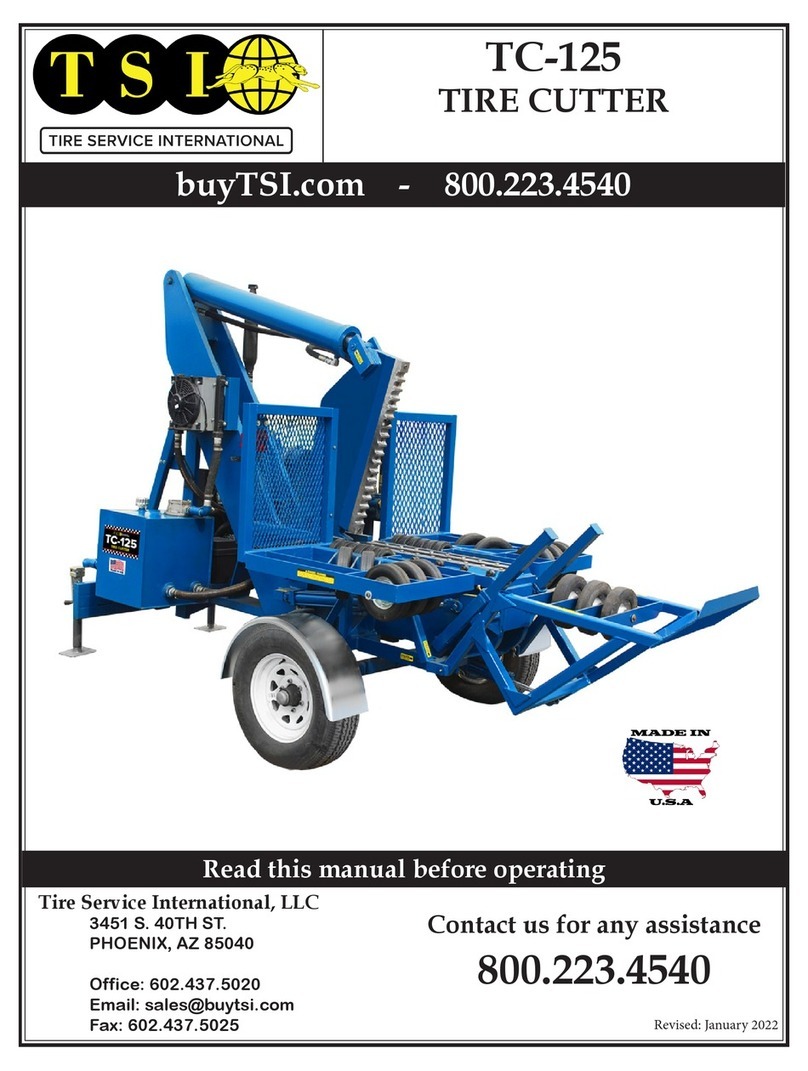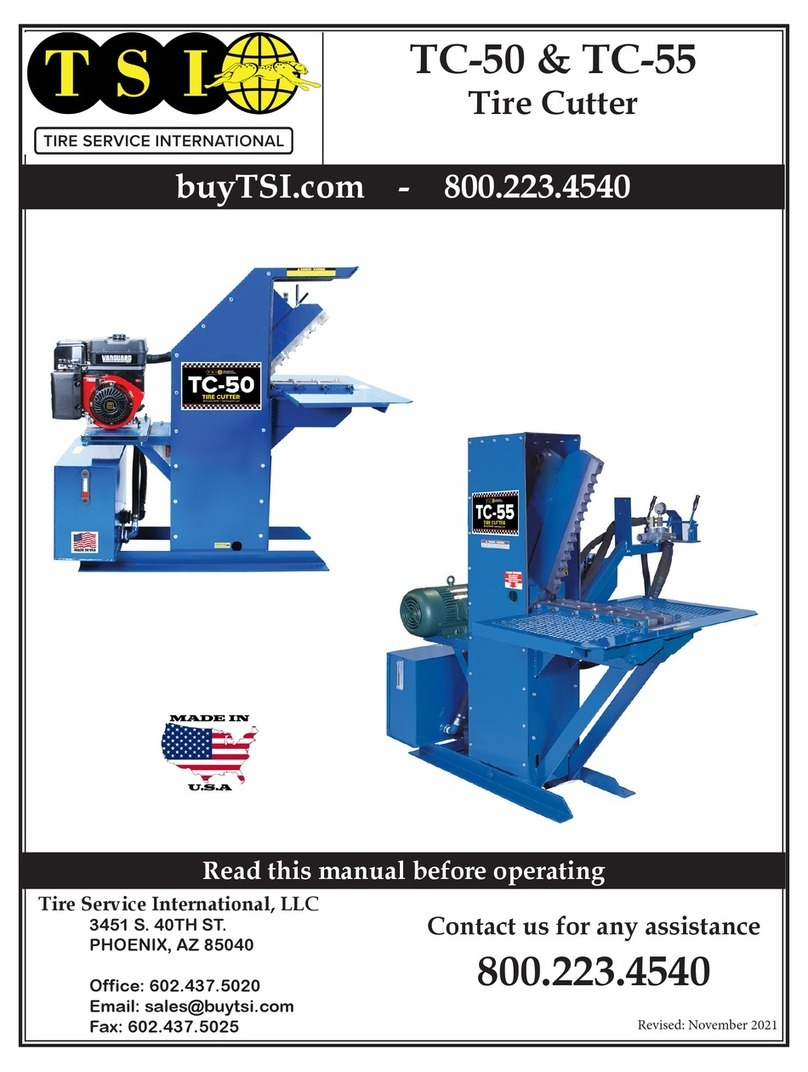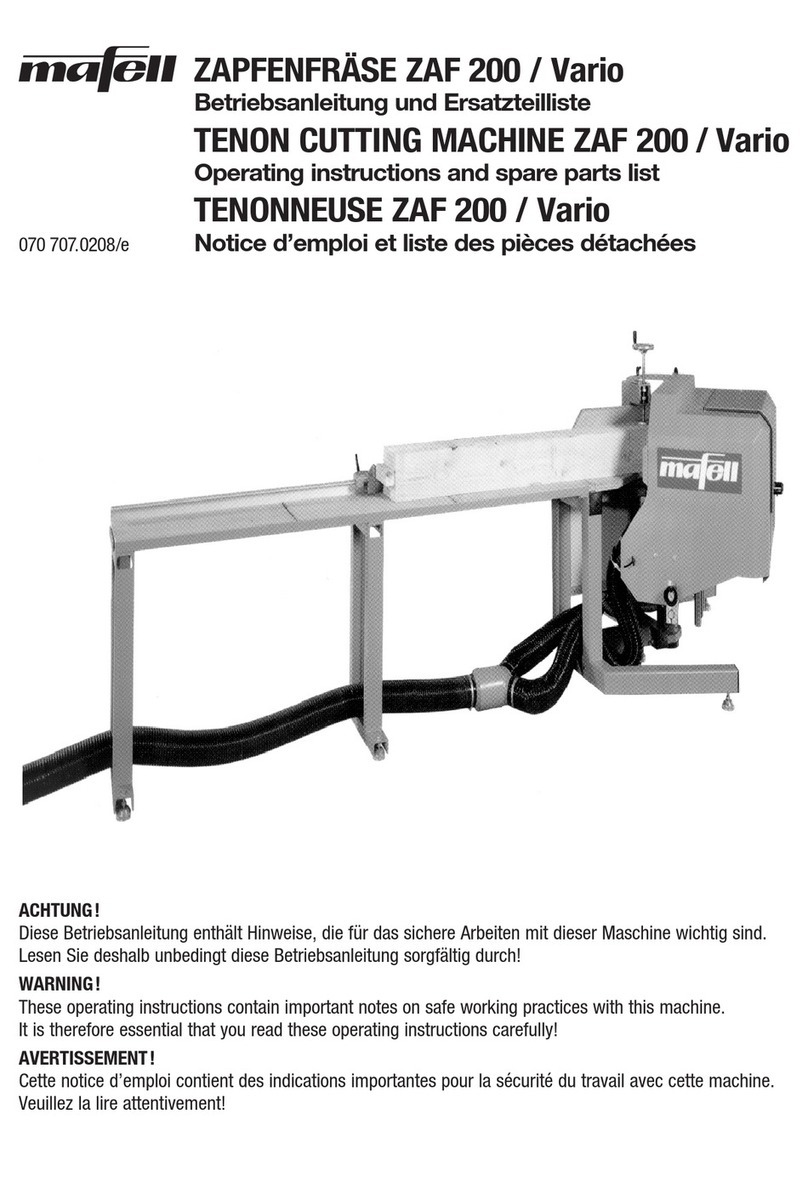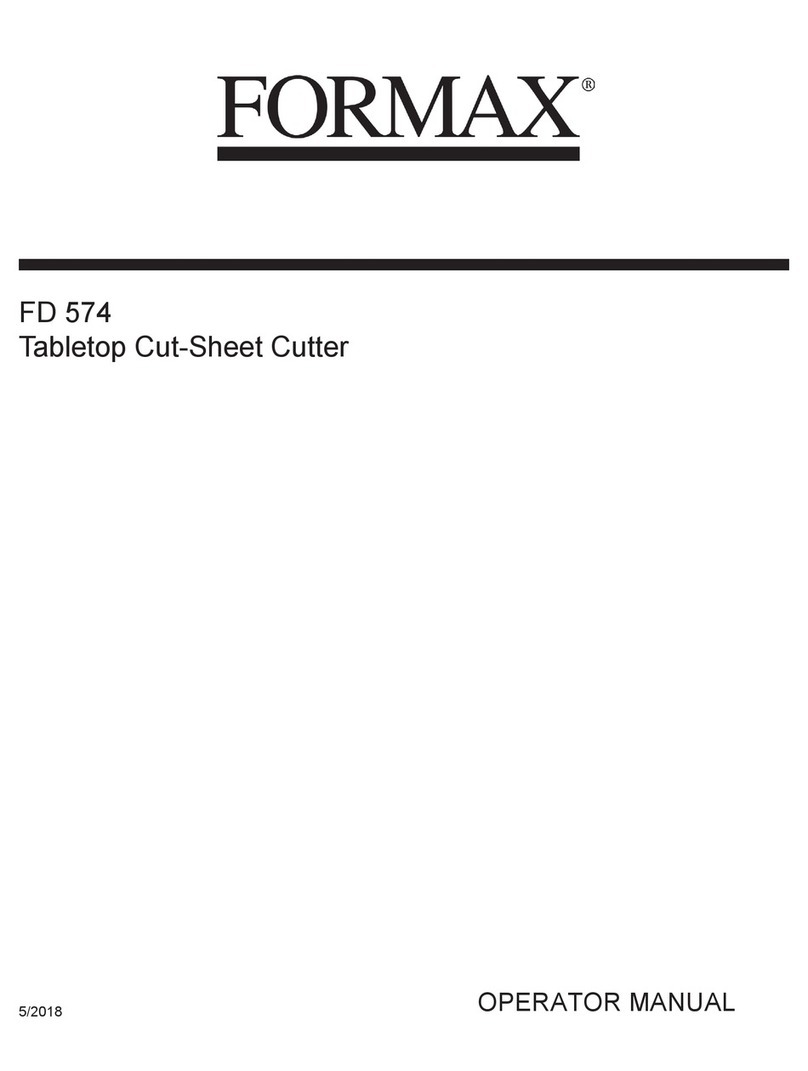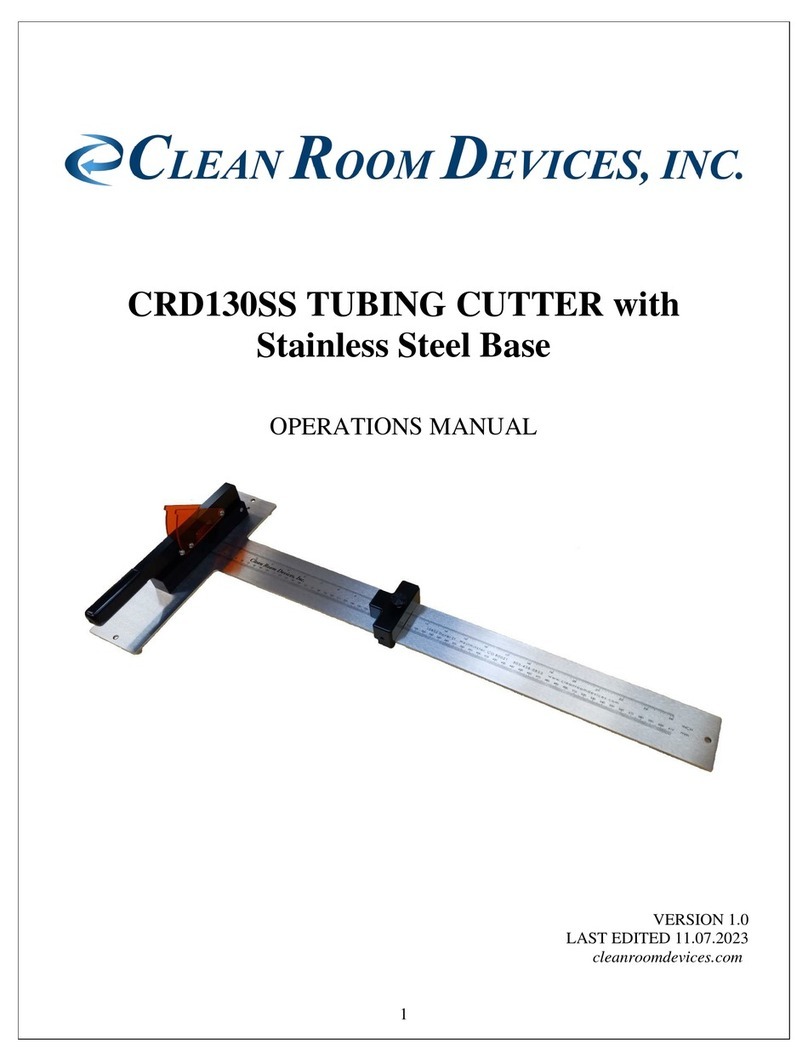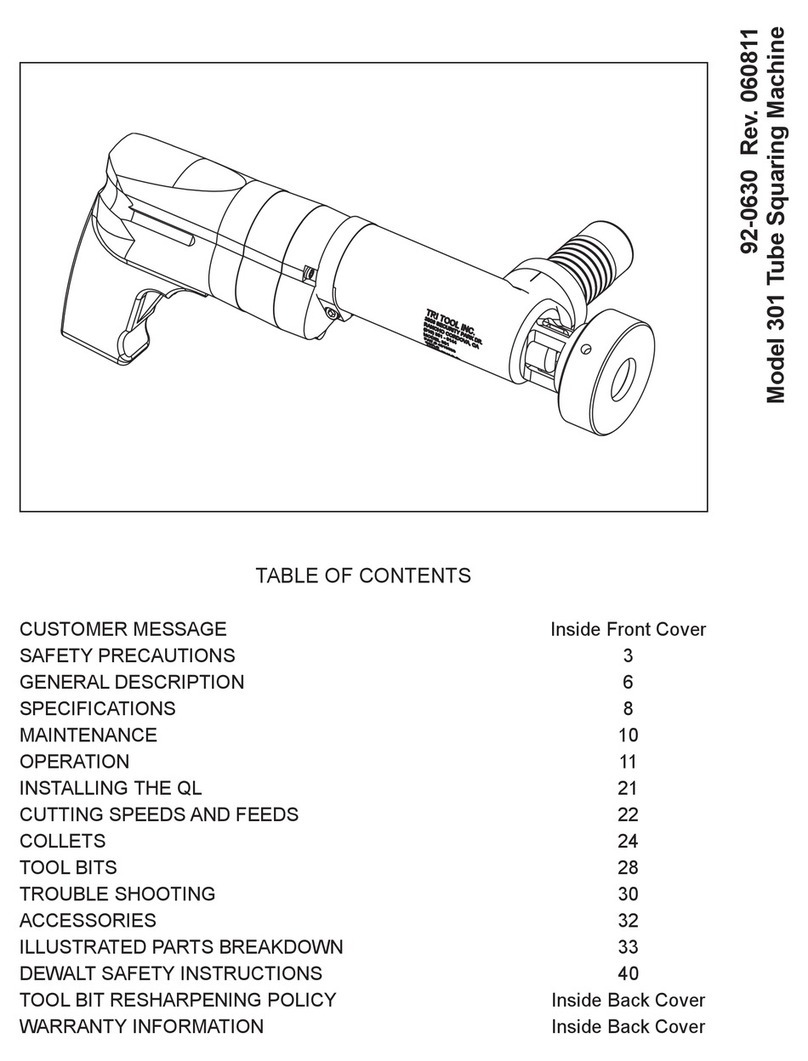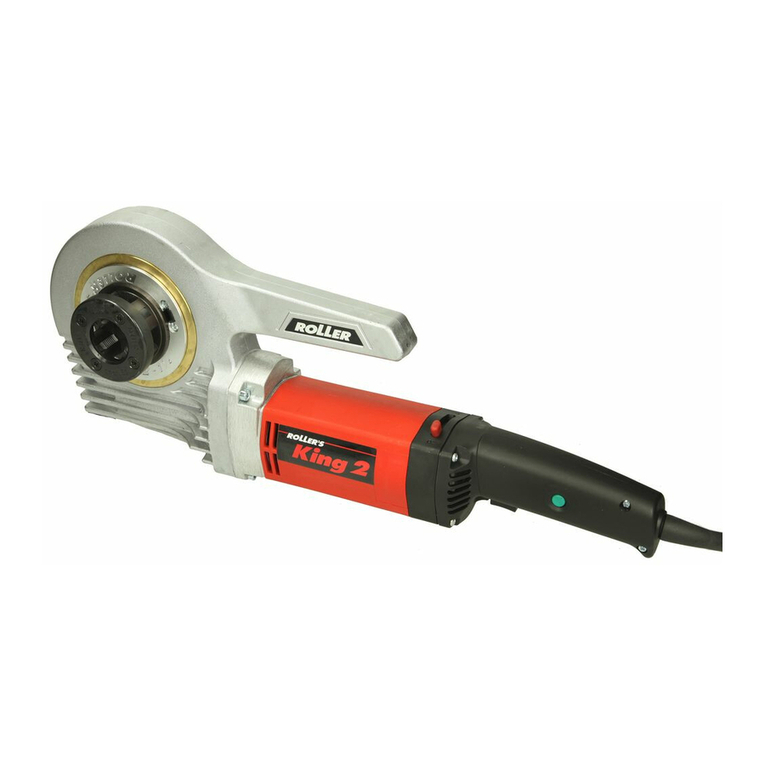
Page 7
Male Shear Arm
1/2" Bolts (7 per side)
Female Shear Bar (2)
1/2" Socket Head Screws &
Locking Nut (6 each per side)
Female Shear Bar Adjustment:
As the steel belting from a tire starts to string out and not cut properly the original bar
edges will eventually need to be adjusted.
To do this run the unit and stop the Male Shear Arm in position as shown above.
Shut off or unplug unit.
Loosen the 1/2" Bolts (7) on one side of the unit and loosen the (6) Lock Nuts for the
Socket Head Screws. Use an Allen Head wrench to adjust the Socket Head Screws to
drive the Female Shear Bar securely flush against the Male Shear Arm and tighten the
Lock Nuts. Do this for both sides. There should be zero clearance between the Male
and Female Shears.
Changing the Female Shear Bars:
Each Female Shear Bar has 4 available cutting edges. Run the unit and stop the Male
Shear Arm in position as shown above. Shut off or unplug the unit.
Remove the 1/2" Bolts from both sides as well as both Female Shear Bars. Loosen the
Locking Nuts and back-out the Socket Head Screws so there's access toclean the
mounting surface. It's a good idea to use Emery cloth to scrape the mounting
surface as clean as possible.
Reposition each Female Shear Bar by choosing a newer edge to use for cutting.
Maintaining the Male Cutter Bar:
The Male Cutter Bar may be turned end for end if it shows areas of wear.
After turning it around make sure to readjust the Female Shear Bars as stated
above.
MAINTENANCE INSTRUCTIONS
NOTE:
Extra stress is placed on machine if proper
sharpness or adjustment is not maintained.
Loosen the 1/2" Bolts (7) on one side of the unit and loosen the (6) Lock Nuts for the
Socket Head Screws. Use an Allen Head wrench to adjust the Socket Head Screws to
drive the Female Shear Bar securely flush against the Male Shear Arm and tighten the
Lock Nuts. Do this for both sides. There should be zero clearance between the Male
and Female Shears.






